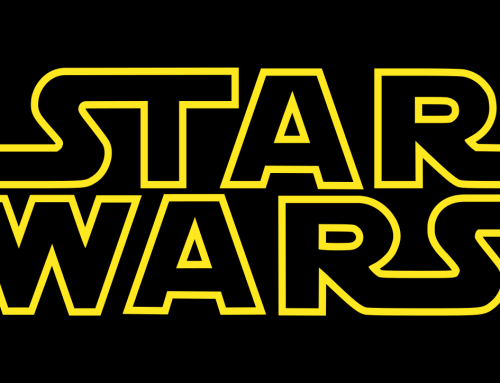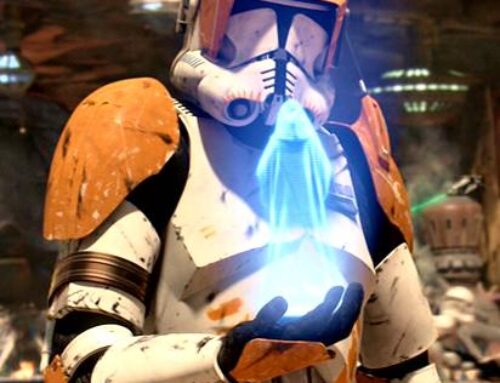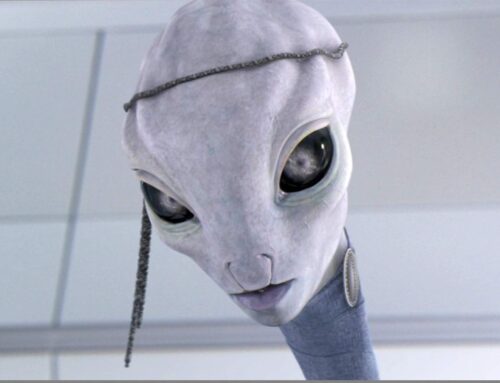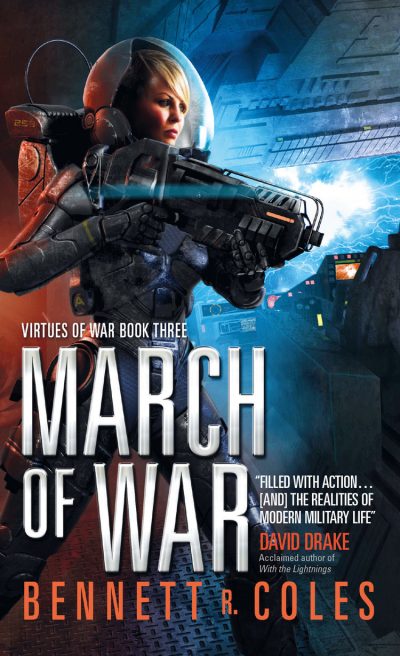Star Wars: How the Jedi Code Destroyed Everything
Star Wars has many famous elements to it, but one of the most famous is those lightsaber-wielding, hooded cloak-wearing mystery figures, the Jedi. In the early movies we only ever saw one or two Jedi together, but the Prequel Trilogy showed us the Jedi Order in its final days before the rise of the Empire.
But what drove the Jedi? How did they acquire their mastery of the Force? And why did they seem to have some really strange ideas about how to live their lives? Ultimately, it all comes back to the Jedi Code, a simple but puzzling summary of their philosophy that for millennia guided the Jedi Order.
And ultimately, it was the Jedi Code that allowed the Empire to rise and that plunged the galaxy into decades of suffering which, as of The Rise of Skywalker, shows no signs of ending.
What is the Jedi Code?
Although its origins are lost in mystery (at least, until something definitive is made canon) the Jedi Order was built upon the teachings of sacred texts passed down for a thousand generations. Yoda tells us that these texts weren’t exactly gripping stuff, (“page turners, they are not”) but the essence of the Jedi beliefs was long ago encapsulated in a few words.
The earliest Jedi Code
The oldest version of the the Jedi Code that is known in the Star Wars universe (since it’s from Star Wars Legends I’m not sure if it’s technically canon but it seems to be widely accepted as such) dates back to before the Old Republic:
Emotion, yet peace.
Ignorance, yet knowledge.
Passion, yet serenity.
Chaos, yet harmony.
Death, yet the Force.
This first version of the Code has puzzled many members of the Star Wars fan base, and some even say that it makes no sense. But the simple words represent a deeper meaning: balance. This original version of the Code accepts that there are emotions, for example, but declares that even with emotions a Jedi can find peace. Balance is the key to everything, acknowledging all the many, related facets to a rich life but rising above them all.
This ancient Code speaks to a profound humility in the first Jedi. When Luke Skywalker is training Rey on Ahch-To in The Last Jedi, it’s clear that he’s been reading the original sacred texts carefully as his teachings stress balance and dismiss the idea of control.

The revised Jedi Code
I guess a lot of Jedi struggled to understand the original Jedi Code, though, and as the Order grew and formalized, considerable efforts were made to re-capture the basic philosophy in a way that could be better understood. We’re told that the Jedi librarian Odan-Urr devoted his life to studying the ancient Code and about 5000 years before the rise of the Empire he re-interpreted the Code:
There is no emotion, there is peace.
There is no ignorance, there is knowledge.
There is no passion, there is serenity.
There is no chaos, there is harmony.
There is no death, there is the Force.
This might sound like just a minor re-working, but in fact there’s a profound difference in meaning between the two versions of the Code. The first version treated the world as a complete whole, accepting all related elements and embracing them. The new version, however, clearly took sides. In just a few words it declares some things bad and other things good. Balance is no longer the focus: now the Jedi should only embrace the Light Side of the Force.
Dealing with the Dark Side
But yeah, you might say, of course a Jedi should focus on the Light Side of the Force: that’s what Jedi do! But let’s not assume we know the whole story (knowledge over ignorance, remember). Almost everything we know about the Star Wars universe is based within about fifty years of Luke Skywalker’s life, and the Jedi Knights we know best are very much a product of their environment. Even if we discount most of what we’ve read in Star Wars Legends, the new (fully canon) novels based in the High Republic indicate that the ways of the Jedi, and their interpretation of the Jedi Code, was different five hundred years before Luke.
One thing is clear: the Jedi have always recognized the danger of the Dark Side of the Force. The earliest Jedi Knights could no doubt see what a descent into the Dark Side could lead to, and in their search for defenses against the temptations of the darkness they developed the Jedi Code. This fundamental aversion to the Dark Side never changes, but the way the Jedi dealt with it does.
The original Jedi Code clearly sees order in the world and encourages a Jedi to act in a way that will maintain stability. It recognizes that the Dark Side exists, including within each Jedi’s self, and rather than suppressing these things it acknowledges them and uses them. The new Jedi Code, in contrast, attempts to build a “perfect” human being, a warrior of the Light above any flaw and beyond any weakness.
It’s a nice idea, but ultimately unworkable. Yes, I know, new Jedi get years of focused training to still their minds, to control their emotions and to use the Force for knowledge and defense, never for attack. This training produces highly disciplined Jedi Knights who are calm, rational and kind – but at what cost?
The Code’s impact on the Jedi Order
For millennia the Jedi were the guardians of peace in the galaxy, and their impact was undoubtedly positive. But as the Order grew it became more complex, more structured, more dogmatic, and like any human institution it became threatened by its own success. For many centuries these weaknesses were hidden, but events in the final days of the Republic revealed the rotted core of the Jedi Order. This rot was caused by the beliefs that had grown from increasingly conservative interpretations of the Jedi Code.
High Republic versus Late Republic
The recent line of High Republic novels have given us a fascinating glimpse into what the Jedi Order was like hundreds of years before the events of the Prequel Trilogy, and the differences are notable.
Perhaps the single greatest “weakness” of Anakin Skywalker was his attachments to other people, and in his day the Order plainly forbade attachments of any kind. But in the High Republic this dogma is far less clear. In the books we have Elzar Mann and Avar Kriss, a pair of accomplished Jedi Knights held in high regard by their peers and by the Order. But they have a romantic history and were even lovers as padawans – and no-one seems to care.
Elzar is still in love with Avar, but Avar is trying to distance herself from him as she embraces what is clearly the growing philosophy of “no attachments” between Jedi. Elzar is a man who feels emotions and who sometimes will act on those emotions, even losing control momentarily a few times. He recognizes the dangers of the Dark Side in his actions but he balances this with his strong connection to the Force. Elzar isn’t afraid of the Dark Side – he respects it and resists it, but doesn’t run from it.

Compare this to the stiff, cold members of the Jedi Council we see in the Prequel Trilogy and The Clone Wars. All emotions are locked down; all decisions must adhere to the strict Code. And most importantly, any investigation of Sith philosophy or teachings is strictly forbidden – not even Master Yoda really knows how the Sith operate or how the Dark Side can work. The newer version of the Jedi Code has shifted Jedi thinking solely into the Light – and thus has blinded them to what the Dark is doing.
Anakin Skywalker
The Star Wars universe as we know it revolves around Anakin Skywalker, and he is the most deeply affected by the dogmatic beliefs of the newer version of the Jedi Code. An individual of unmatched power in the Force, he’s treated like a pariah by the Jedi Council for all his years in the Order. He forms attachments – with his mother, with his Jedi master, with his padawan, with his (forbidden) wife – and his emotions drive his actions.
Under the first Jedi code, Anakin would have been able to explore all aspects of his own self. He could have acknowledged his emotions and worked through them, rather than having them explode outward in anger as he swung his lightsaber. Under the first Jedi Code Anakin would have been able to access all the different elements of the universe and he would have seen how they were related – under the newer Jedi Code he was shamed, restricted and sidelined. Is there really any surprise that he embraced the Sith?
Obi-Wan Kenobi
Perhaps the finest example of the Jedi Order under the new Code, Obi-Wan never lost his belief in the superiority of the Light Side of the Force. He certainly felt emotions – for his master, for his padawan, for Satine Kyrze – but he never gave them the upper hand. Throughout his long and difficult life, Obi-Wan always personified peace, knowledge, serenity, harmony and the Force. Master Obi-Wan did his best to train Anakin and when his former padawan fell to the Dark Side it broke his heart, but still Obi-Wan pressed on as a loyal Jedi.
He was perhaps the perfect Jedi. But I can’t help but sense that too much was lost in the process. Obi-Wan was never able to become the fullest person he could have been and the galaxy was weakened because of it.
Mace Windu
Master Windu is an interesting character because he seems to understand both versions of the Jedi Code. From what we see in the movies and Clone Wars, Mace does seem to be the first and last line of defense against any deviation from the strict Jedi Code – he’s coldly unemotional, he criticizes Anakin often and under his leadership the Jedi Order remains utterly blind to the rising threat of Palpatine / Darth Sidious.
And yet… in the novelization of Revenge of the Sith (a book I highly recommend, by the way, as it finally tells the story of Anakin’s downfall the way it should have been told) Mace Windu tells Obi-Wan about how, “I created Vaapad to answer my weakness: it channels my own darkness into a weapon of the light.” Mace recognized the darkness within himself, and this led him to create an entirely new style of lightsaber fighting, Vaapad, which used his anger as an ally.
This sounds a lot like the original Jedi Code, where good and bad were related and could both be harnessed, suggesting that Mace Windu was far more insightful than his strict persona suggests. Mace clearly had the potential to guide the Jedi Order well, but having spent his entire life constrained under the dogma of the new Jedi Code he just couldn’t break free enough to bring life to his instincts.

Source
Ahsoka Tano
Ahsoka is perhaps the bravest of all the Jedi, because she recognizes the failing of the Order and chooses to act. She knows she can’t change it, so instead she heads out into the galaxy to find her own path. She doesn’t turn to the darkness, or abandon the Jedi Code entirely, but once she’s free from its oppressive constraints she can explore however she wants.
And there’s an entire universe to explore. Ahsoka sees different versions of her own future, she grows in her understanding of the Force, and she becomes something more than what the Jedi Order would allow. She learns that time is fluid, that some legends are real, and that death is not necessarily the end. In the canon novel named after her we even see her faced with the possibility of romance for the first time since leaving the Order – she’s unsure how to react but that may simply be because she was never allowed to explore her own feelings and sexuality as a padawan.
With the new, post-Empire TV series Star Wars: Ahsoka on its way, we’re going to see an older, wiser, more seasoned togruta Force-wielder. We don’t know yet if she and Luke have ever met, but I can see how her influence might have helped Luke to build his new line of thinking based on a balanced universe. And although still not canon, Legends tells us that Luke eventually marries Mara Jade, so there’s lots of potential for a re-interpretation of the Code post-Empire.
(As an aside, I hope Ahsoka finds romance. So many of her peers were robbed of that, and it would be nice for at least one Star Wars character to live happily ever after.)
Star Wars is shaped by the Jedi Code
The Jedi Code is never actually spoken in the movies, nor is it explored in depth even in the Prequel Trilogy. But it’s central to the entire drama of Star Wars. It might be a little unclear right now what is canon and what is relegated to Star Wars Legends, but the beauty of Star Wars is that fans are free to draw on Legends unless and until something in canon supersedes it.
So for now, the Jedi Code is known to exist in two forms, an ancient one and a newer one. The ancient one seemed to work pretty well, since the Order stood for a thousand generations. But by the time of the High Republic, the dogma of the new Code was isolating the Jedi from the fullness of the Force and imposing unnatural restrictions on them which eventually isolated them from the people they served and ultimately blinded them to the rise of the Sith. Although it took many centuries, the rigid adoption of the revised Code was what ultimately led to the death of the Jedi.
It might seem like such a small difference, but the meaning between the two Codes was the difference between understanding and ignorance.
Emotion, yet peace.
Ignorance, yet knowledge.
Passion, yet serenity.
Chaos, yet harmony.
Death, yet the Force.
This Code builds bridges. The new Code builds walls.
There is no emotion, there is peace.
There is no ignorance, there is knowledge.
There is no passion, there is serenity.
There is no chaos, there is harmony.
There is no death, there is the Force.
Sometimes progress is good, but sometimes the original idea carries the greatest wisdom. It would seem that Luke Skywalker understood this better than anyone. I realize that The Last Jedi is a controversial Star Wars film, but Luke’s attitude toward the Jedi is very consistent with a thematic undertone that has pervaded the saga for years: that the Jedi had lost their way. If The Rise of Skywalker had carried forward this bold idea in its fullness – the death of the Jedi Order and the birth of something new – then we really would have seen the telling of an epic story.
But who am I to criticize how my favorite movie saga concluded? Things are hardly over for Star Wars and I’m sure there will be many more opportunities to explore the implications of the Jedi Code in the future. And I’ll welcome it, because getting mad is pointless. Remember, fans: There is no emotion, there is peace.
Bennett R. Coles is an award-winning, best-selling author and ghostwriter of science fiction and space fantasy series. His newest novel, Light in the Abyss, is now available here.






